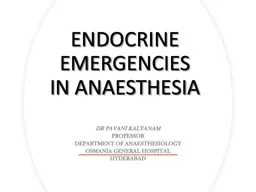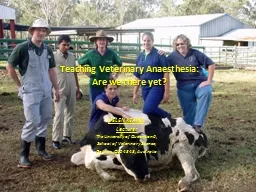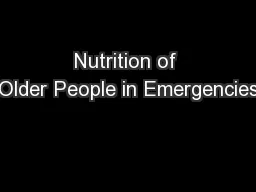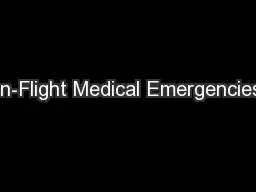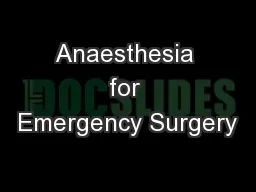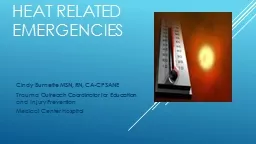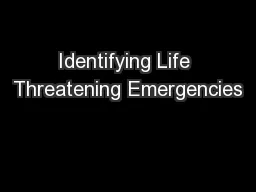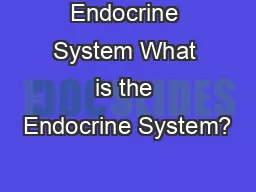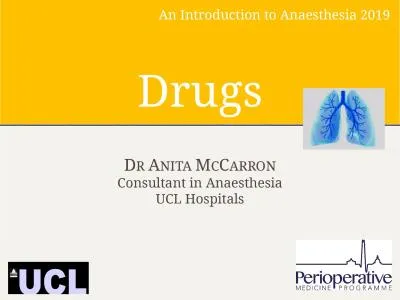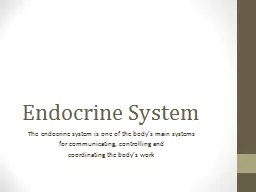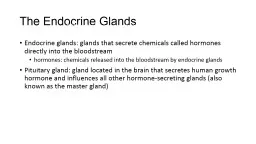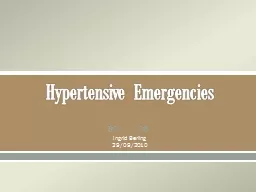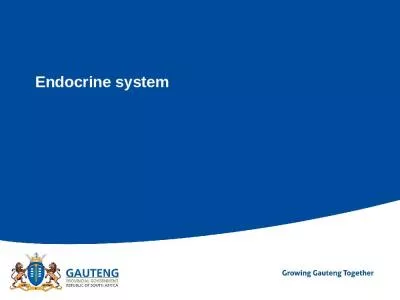PPT-ENDOCRINE EMERGENCIES IN ANAESTHESIA
Author : delcy | Published Date : 2022-02-10
DR PAVANI KALYANAM PROFESSOR DEPARTMENT OF ANAESTHESIOLOGY OSMANIA GENERAL HOSPITAL HYDERABAD ENDOCRINE SYSTEM Growth and development Metabolism Control of body
Presentation Embed Code
Download Presentation
Download Presentation The PPT/PDF document "ENDOCRINE EMERGENCIES IN ANAESTHESIA" is the property of its rightful owner. Permission is granted to download and print the materials on this website for personal, non-commercial use only, and to display it on your personal computer provided you do not modify the materials and that you retain all copyright notices contained in the materials. By downloading content from our website, you accept the terms of this agreement.
ENDOCRINE EMERGENCIES IN ANAESTHESIA: Transcript
Download Rules Of Document
"ENDOCRINE EMERGENCIES IN ANAESTHESIA"The content belongs to its owner. You may download and print it for personal use, without modification, and keep all copyright notices. By downloading, you agree to these terms.
Related Documents

